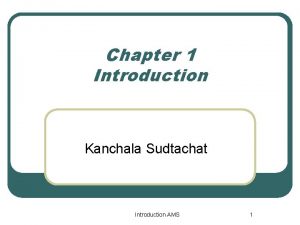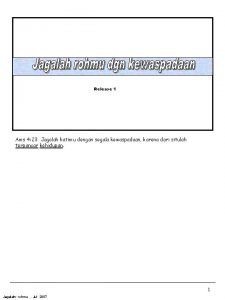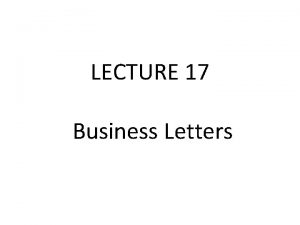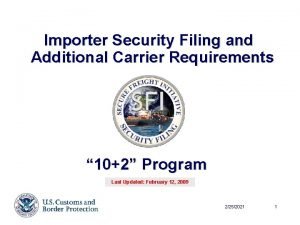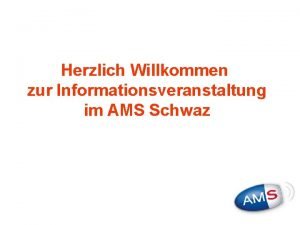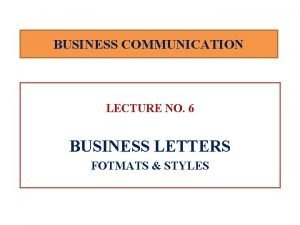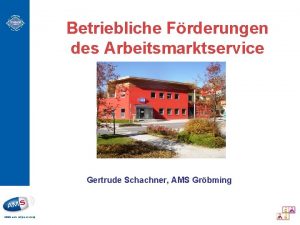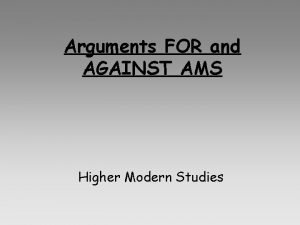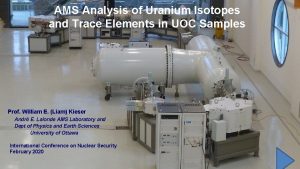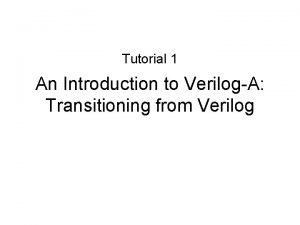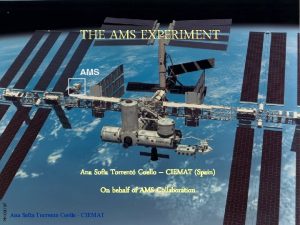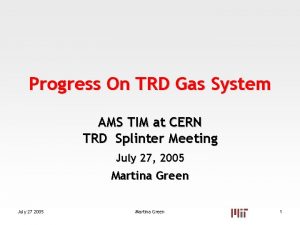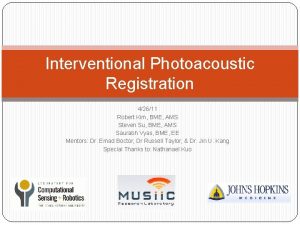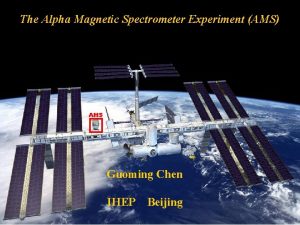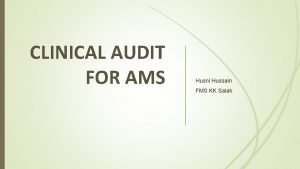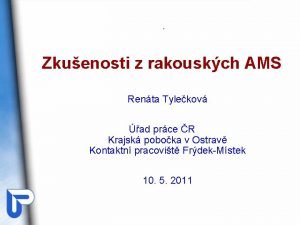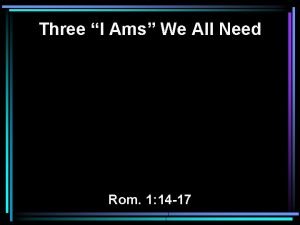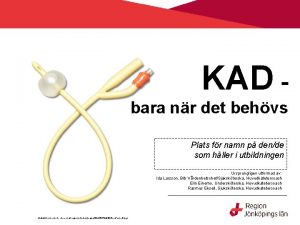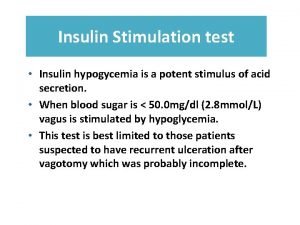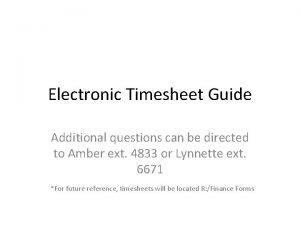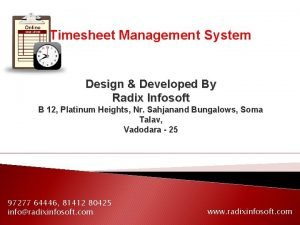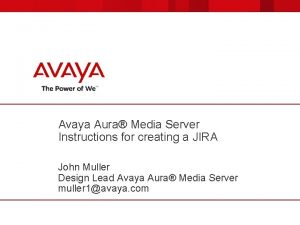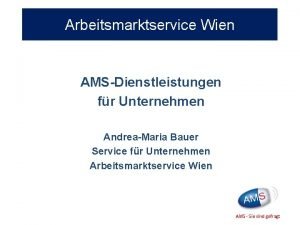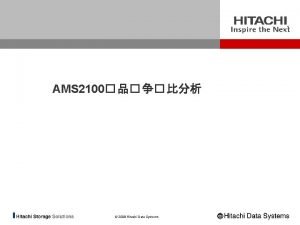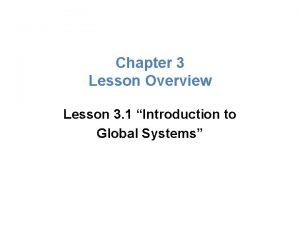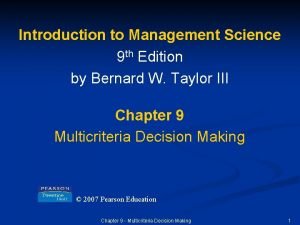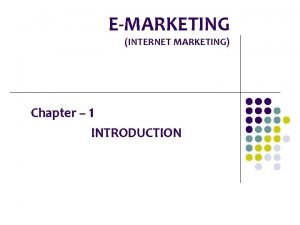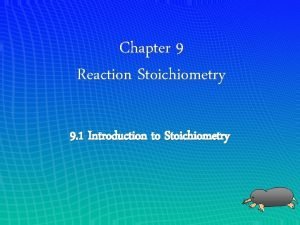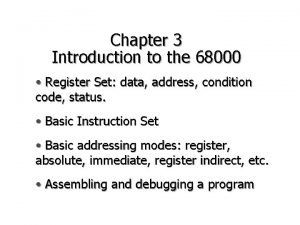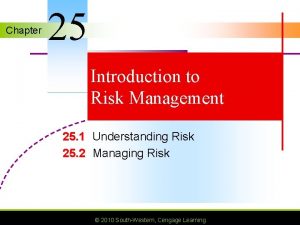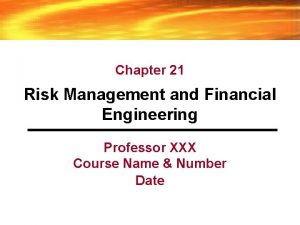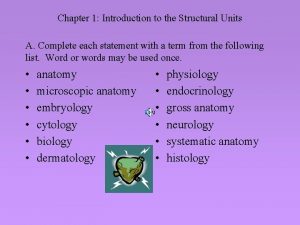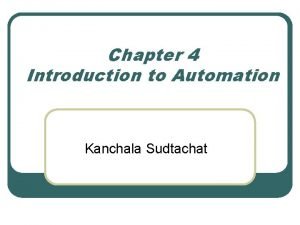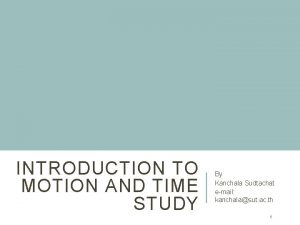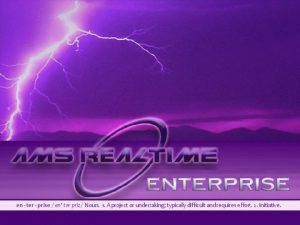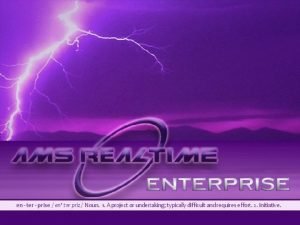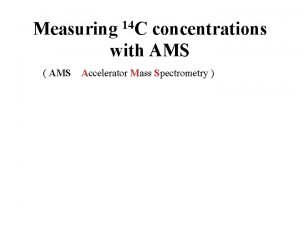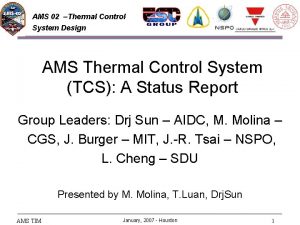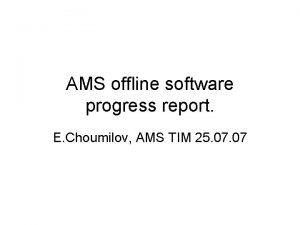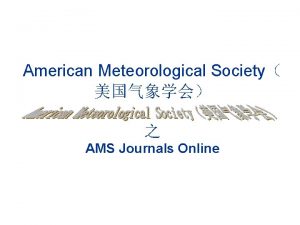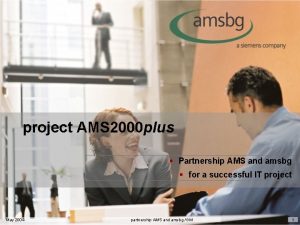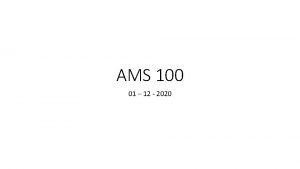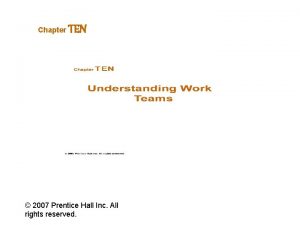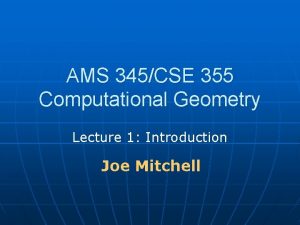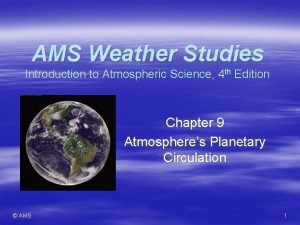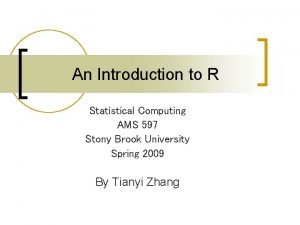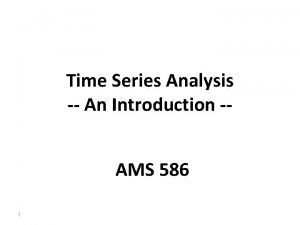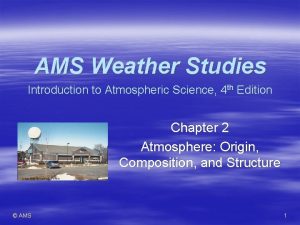Chapter 1 Introduction Kanchala Sudtachat Introduction AMS 1




















































- Slides: 52

Chapter 1 Introduction Kanchala Sudtachat Introduction AMS 1

Contents l l Production System Facilities Manufacturing Support System Automation in Production System Automation Principles and Strategies Introduction AMS 2

Production system l ������� �� , �������������������� 2 ������� 1. Facilities 2. Manufacturing Support System Introduction AMS 3

Production system Manufacturing support systems Production system Facilities: Factory Equipment Introduction AMS 4

Production System Facilities l • Facilities �������� factory, equipment ������������� Manufacturing Support System ������� set �������������������� 5 Introduction AMS �����

Facilities l l ������� factory, equipment, tooling, Material Handling, Inspection ������� Computer �������� Plant Layout ��������������������� �� Introduction AMS 6

Manufacturing System l l l Manufacturing System refer to these equipment and the workers who operate them Manufacturing can be individual work cells. Manufacturing system as groups of machines and worker, for ex. A production line. Introduction AMS 7

Manufacturing System l l l Manufacturing system touch the product. The quantity produced by a factory has a very significant and the way manufacturing is organized. ����������������� ��� 3 ������ • Manual work system • Worker-machine system • Automated system Introduction AMS 8



Manufacturing System Manual Work System Worker Machine System Automated System Introduction AMS 11



Manufacturing Support System l Business Functions ������������ • l l l ����������������� ������� Product Design ������������ ����� prototype Manufacturing Planning ������� process, ��������� 14 Introduction AMS Manufacturing control

Manufacturing Support Systems Introduction AMS 15

Classified quantities production 1. Low production: range of 1 to 100 units/year 2. Medium production: range of 100 to 10, 000 units/year 3. High production: 10, 000 to millions of units Introduction AMS 16

Product variety l l l Refer to the different product designs or types that are produced in a plant. Different product have different shapes and sizes and styles. When the number of product types made in a factory is high, this indicates high product variety. Introduction AMS 17

Relationship between product variety and production quantity Introduction AMS 18

Product variety l l Hard product variety is when the product differ substantially, is characterized by a low proportion common parts among the products. Such as the differences between car and truck. Soft product variety is when there are only small differences between product. Such as differences between car models made on the same production line. Introduction AMS 19

Low Quantity Production l l l is the “job shop production”. The product are typically complex. Customer orders are often special, and repeat orders may never occur. Equipment is general purpose and the labor force is highly skilled. A job shop must be designed for maximum flexibility for hard product variety. Introduction AMS 20

Low Quantity Production (cont(. l Fixed-position layout for job shop production is large and heavy and difficult to move. Introduction AMS 21

Low Quantity Production (cont(. l Process layout, in which is arranged according to function or type. Introduction AMS 22

Low Quantity Production (cont(. l l Process layout is produced different parts, each requiring a different operation sequence. are routed through the departments in the particular order needed for their processing, usually in batches. Machinery and methods to produce a part are not designed for high efficiency. In-Process inventory can be high. Introduction AMS 23

Medium Quantity Production l l has two different types of facility. Batch production • When product variety is hard, the traditional approach is “batch production”. • The changeover between production runs takes time that called the setup time or changeover time Introduction AMS 24

Medium Quantity Production (cont(. • Batch production is commonly used in make -to-stock situation. • The equipment is usually arranged in a process layout Introduction AMS 25

Medium Quantity Production (cont(. l Cellular manufacturing • Product variety is soft. • Product can be made on the same equipment without significant lost time for changeover. • Cells consisting of several workstations or machines. • The layout is called a cellular layout. Introduction AMS 26

Medium Quantity Production (cont(. l Cellular manufacturing (cont. ) • Each cell is designed to produce a limited variety of part configurations. • The cell specializes in the production of a given set of similar parts or products. Introduction AMS 27

High Production l l l Refer to as mass production Two categories of mass production 1. Quantity production 2. Flow line production Quantity production • • • Single parts on single pieces of equipment. The method of production typically involves standard machines. The typical layout is the process layout Introduction AMS 28

High Production (cont(. l Flow line production • • Involves multiple workstation arranged in sequence. The parts or assemblies are physically moved through the sequence to complete the product. The work is usually moved between station by powered conveyor. The typical layout is the production layout Introduction AMS 29

Production Layout Introduction AMS 30

Types of facilities and layouts Introduction AMS 31

High Production (cont(. l l Flow line production is where there is no variation in the products made on the line, called a single model production line. Mixed-model production line applies to a case of soft product variety in the products made on the line. Introduction AMS 32

Automation in Production Systems l l Automation can be defined as a technology concerned with the application of mechanical, electronic, and com-base systems to operate and control production. Separated into 2 categories: 1. Automated of the Manufacturing system in factory 2. Computerization of the manufacturing support systems. Introduction AMS 33

Automation in Production Systems Introduction AMS 34


Automated Manufacturing Systems Classified into 3 basic types. 1. Fixed Automation : sequence of processing (or assembly) operations is fixed. Typical features of fixed automation are l • High initial investment • High production rate • Relative inflexible in accommodating product variety Introduction AMS 36

Automated Manufacturing Systems l Fixed Automation : • Very large quantities and high production rate • High initial cost of the equipment can be spread over a very large number of units • Ex Machining transfer lines and Automated assembly machines. Introduction AMS 37

Automated Manufacturing Systems 2. Programmable Automation • The operation sequence is controlled by a program. • New programs can be prepared and entered into the equipment to produce new products. • Typical features of programmable automation are • High investment • Low production rate than fixed automation Introduction AMS 38

Automated Manufacturing Systems • Compare with the features of fixed automation are • Flexibility to deal with variation and change in product configuration • Most suitable for batch production • Include numerically controlled (NC) machine tools, in industrial robots, and programmable logic controllers. Introduction AMS 39

Automated Manufacturing Systems l Flexible Automation: • No time lost for changeovers from one part style to the next • Soft variety • Typical features of flexible automation are • High investment • Continuous production of variable mixtures of products Introduction AMS 40

Automated Manufacturing Systems l Typical features of flexible automation are • Medium production rate • Flexible to deal with product design variations Introduction AMS 41

Automated Manufacturing Systems Introduction AMS 42


Reasons for Automation 1. 2. 3. 4. To increase labor productivity To reduce labor cost To mitigate the effect of labor shortage To reduce or eliminate routing manual and clerical tasks 5. To improve worker safety Introduction AMS 44

Reasons for Automation 6. To improve product quantity 7. To reduce manufacturing lead time 8. To accomplish processes that cannot be done manually 9. To avoid the high cost of not automating Introduction AMS 45

Automation Principles And Strategies l ������� automation project 3 ������ 1. The U. S. A principle 2. Ten Strategies for Automation and Process Improvement 3. An Automation Migration Strategy Introduction AMS 46



Ten Strategies for Automation and Process Improvement 1. 2. 3. 4. 5. 6. Specialization of operation Combined operation Simultaneous operation Integration of operation Increased flexibility Improved material handling and storage Introduction AMS 49

Ten Strategies for Automation and Process Improvement 7. 8. 9. 10. On-line inspection Process control and Optimization Plant operation control Computer integrated manufacturing Introduction AMS 50

Automation Migration Strategy l ������������ 3 ���� • • • Phase 1: Manual production • ���������������������� Phase 2: Automated production • ���������������������� loadunload ������������� ��� Introduction AMS Phase 3: Automated integrated production 51

Automation Migration Strategy Introduction AMS 52
 Kanchala animal
Kanchala animal Ams 4:23
Ams 4:23 Business letters introduction
Business letters introduction Ams filing requirements
Ams filing requirements Ams.at job room
Ams.at job room Simplified letter format
Simplified letter format Come back eingliederungsbeihilfe
Come back eingliederungsbeihilfe Ams modern studies
Ams modern studies Anna triveni scheme
Anna triveni scheme Anna triveni scheme
Anna triveni scheme Ibm ams
Ibm ams Ams material
Ams material Veriloga tutorial
Veriloga tutorial Ams torrent
Ams torrent Amstim
Amstim Bme:ams
Bme:ams Ams
Ams Audit ams
Audit ams Ams hollabrunn
Ams hollabrunn Ams designer
Ams designer Ams csru
Ams csru Ams realtime weather maps central
Ams realtime weather maps central I ams
I ams Ams ix remote peering
Ams ix remote peering Pros and cons of fptp
Pros and cons of fptp Open end kateter
Open end kateter Hypogycemia
Hypogycemia Ams timesheet
Ams timesheet Ams design flow
Ams design flow Wida screener training
Wida screener training Radix infosoft
Radix infosoft Timesheet analysis
Timesheet analysis Ams.l
Ams.l Lynda unt
Lynda unt Avaya aams
Avaya aams Ams service für unternehmen
Ams service für unternehmen Hitachi ams 2100
Hitachi ams 2100 Essay structure
Essay structure Levels of ecological organization
Levels of ecological organization Role of operations management
Role of operations management Introduction to management science chapter 9 solutions
Introduction to management science chapter 9 solutions Marine ecology
Marine ecology Introduction of e-marketing
Introduction of e-marketing Chapter 9 review introduction to stoichiometry
Chapter 9 review introduction to stoichiometry Chapter 9 introduction to waves
Chapter 9 introduction to waves Chaparral climograph
Chaparral climograph Chapter 3 research instrument example
Chapter 3 research instrument example Motorola 68000 isa
Motorola 68000 isa Pure risk example
Pure risk example Chapter 24 section 1 animal characteristics
Chapter 24 section 1 animal characteristics Chapter 21 introduction to risk management
Chapter 21 introduction to risk management Chapter 19 section 1 introduction to protists answer key
Chapter 19 section 1 introduction to protists answer key Introduction to the structural units
Introduction to the structural units
